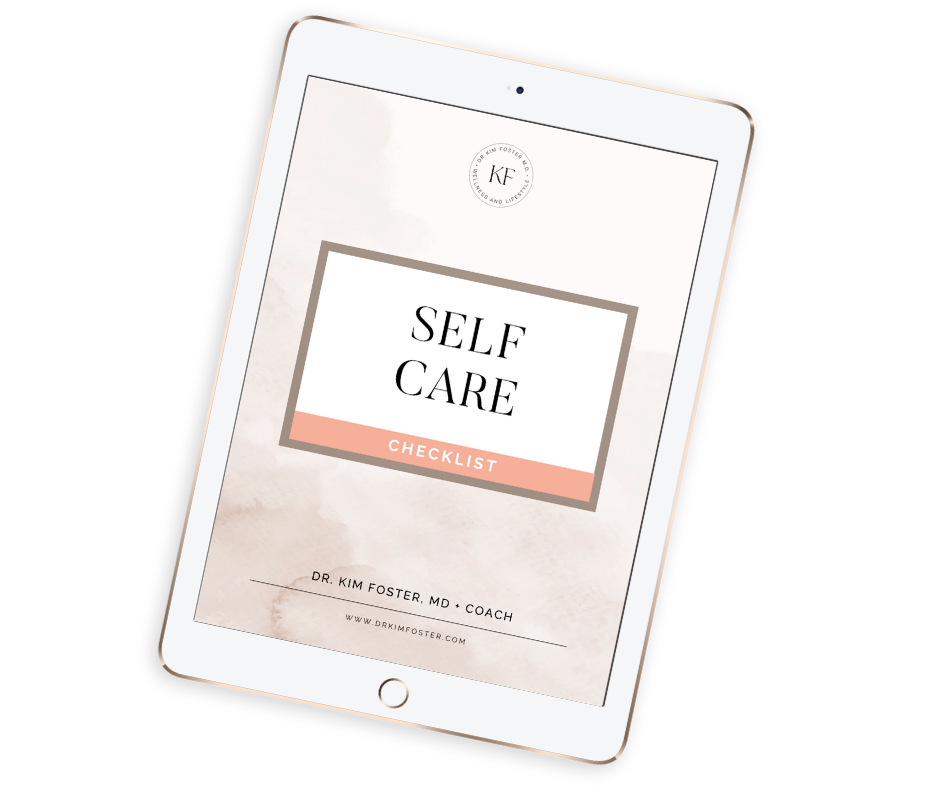Do you often feel overwhelmed by distractions or have an ever-growing to-do list that prevents you from zeroing in on what truly matters?
This is a struggle I know well.
A few years ago, I was juggling my career as a doctor, managing my household, building a coaching side hustle, and raising two young children.
My days were a blur of constant activity, and I felt like a scattered mess.
I remember one particular evening when I reached breaking point. Overwhelmed by exhaustion, I realized I had to find a way to regain control of my time and focus.
I started exploring different strategies and techniques for increasing focus and productivity and found some that genuinely transformed my life.
And in this week’s article and YouTube video, I’m sharing these five game-changing strategies with you.
So, if your ability to focus is shrinking, read on. These strategies will help you transform your scattered thoughts into laser-focused action to achieve your biggest goals.
1. Manage Your INTERNAL Triggers
While researching focus and productivity hacks, I read a great book called ‘Indistractable’ by Nir Eyal.
One of the things Nir talks about in the book is the importance of understanding and managing the internal and external triggers that lead to distraction.
Let’s discuss internal triggers first…
Internal triggers are the emotions and mental states that push us to seek distractions. These feelings are usually uncomfortable, and we often try to avoid them by doing things that aren’t very productive.
Common internal triggers are boredom, loneliness, stress, anxiety, fatigue, and uncertainty.
So, how do we manage those internal triggers?
One way is through mindfulness and self-awareness. By practicing mindfulness, you become more aware of your internal states, allowing you to catch yourself before seeking a distraction.
It’s also essential to develop healthy ways to cope with uncomfortable emotions.
Journaling and breathing exercises can help you work through discomfort. Physical activities like running or walking in nature are also helpful.
Finding healthy coping mechanisms that work for you will help you better manage your emotions, reducing the need to seek escapism or distractions.
2. Manage Your EXTERNAL Triggers
Now, let’s talk about external triggers.
Many common external triggers are technology-related, such as notifications, social media alerts, emails, and phone calls.
External triggers can also include people, such as annoying colleagues or family members interrupting you while working from home.
Your physical environment can also be a trigger. For example, cluttered or noisy surroundings can make it hard to concentrate.
There are a few ways to manage these external triggers, but the exact method will depend on what they are.
Firstly, you can modify your environment by:
- Decluttering
- Using noise-canceling headphones
- Closing the door if working from home
- Leaving your phone in another room
I also recommend scheduling dedicated time for external triggers.
For example, if emails or social media notifications often distract you, allocate specific times during the day to check them so they don’t constantly interrupt your workflow. Of course, this will involve creating a boundary with yourself not to open these apps during the rest of the day.
3. Prioritize Ruthlessly
Being busy and being productive are two VERY different things.
When you’re swamped with tasks and distractions, you might feel like you’re always busy yet never making real progress.
This is where prioritization can help.
Prioritizing helps you clarify your priorities so that you know which tasks will help you move forward and which will not. This means getting clear on what’s most important to YOU—not just what’s demanding your attention or what others expect.
Once you’ve identified your highest-priority project, you must create boundaries with yourself and others to stay focused.
This will mean saying no A LOT, which is the ruthless part of this strategy. Essentially, you will have to say no whenever someone asks you to do something that has nothing to do with your most important project.
But remember, not all triggers are internal. So, another part of ruthless prioritization is saying no to YOURSELF whenever your internal triggers for distraction arise.
From my experience, my highest priority projects are often complicated or not the most enjoyable thing to do. Boredom and uncertainty are common internal triggers that make us seek out low-value tasks to busy ourselves with instead.
4. Use a Timer
You might have heard of the Pomodoro Technique, where you set a timer for 25-minute intervals of deep focus work followed by a 5-minute break.
I’ve found using timers like this to be highly effective.
Firstly, timers create a sense of urgency that encourages you to work more efficiently and intensely. If you know you only have 10 minutes left, you want to get as much done as possible, so you are less likely to give in to the temptation of distractions.
Similarly, knowing that a break is coming up can make it easier to resist distractions because you know you don’t have to wait much longer until you can check your phone or whatever else you want to do.
Timers also help break big tasks into manageable chunks, so I find this technique particularly useful for tackling daunting projects.
I even use timers for tasks that tend to drag on, like checking emails. For instance, I’ll set a 15-minute timer to reply to as many emails as possible and then stop, preventing me from losing hours in my inbox.
5. Make Pacts With Yourself
Nir Eyal describes a powerful strategy called “pacts” in his book “Indistractable.”
Pacts are precommitments that help you stick to your intentions by aligning your future actions with your current goals. There are three main types:
- Effort pacts make distractions harder to access, which helps you stay focused. For example, you might put your phone in another room or lock it away during deep work sessions, increasing the effort to give in to this trigger.
- Price pacts attach a financial consequence to not following through on your commitments. For example, you could agree with a friend to pay a certain amount of money if you fail to meet your goals. It’s hardcore, but it works for some people.
- Identity pacts involve adopting an identity that aligns with your goals. By seeing yourself as focused and disciplined, you’re more likely to act that way. For example, telling yourself, “I stay focused and avoid distractions,” can positively influence your behavior. Also, publicly sharing your goals adds social pressure, reinforcing this new identity and motivating you to stay committed.
Final Thoughts
Want to learn more about these five strategies to increase your focus and productivity?
Watch the full YouTube video, where I give detailed explanations of each technique along with plenty of examples and my personal experience using them.
Here’s where you can watch:
I’d love to hear what you think about these strategies. Comment below which ones you will try first to increase your focus!
Download my FREE Self Care Checklist!


FREE CLASS!
Looking to take your wellness journey to the next level?
The 3 Secrets For Stepping Into A Meaningful New Career Without Wasting Time Or Money
- find out why health & wellness coaching is a skyrocketing industry that can provide the freedom and fulfillment you’ve been craving
- discover the 3 biggest myths about health & wellness coaching that will hold you back (and what the truth is instead)
- learn the secret sauce for getting amazing results for your clients (and building a profitable business as a wellness coach)
…and more!







